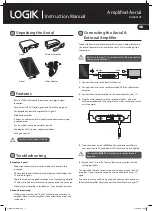
CAUTION:
If you delete a pool, its pool-VOLs (LDEVs) will be blocked. Blocked volumes must be
formatted before use.
CAUTION:
If the V-VOL data is migrated through the host, unallocated areas of the volume may
be copied as well. The used capacity of the pool increases after the data migration because the
areas that were unallocated before the data migration have become allocated areas due to
migration.
To migrate the V-VOL data:
1.
Copy all data of V-VOLs from the source to the target.
2.
Perform the operation to reclaim zero pages.
Perform this procedure for each V-VOL. When data migration is done on a file-by-file basis, perform
the operation to reclaim zero pages if necessary.
To restore the backup data:
1.
Restore the V-VOL data.
2.
Perform the operation to reclaim zero pages.
Perform the above procedure for each V-VOL.
Smart Tiers
About tiered storage
In a tiered storage environment, storage tiers can be configured to accommodate different categories
of data. A tier is a group of storage media (pool volumes) in a THP pool. Tiers are determined by
a single storage media type. A storage tier can be one type of data drive, including SSD, SAS,
or external volumes. Media of high-speed performance make up the upper tiers. Media of low-speed
response become the lower tiers. Up to a maximum of three tiers can coexist in each Smart Tiers
pool.
Categories of data may be based on levels of protection needed, performance requirements,
frequency of use, and other considerations. Using different types of storage tiers helps reduce
storage costs and improve performance.
76
Configuring thin provisioning
















































